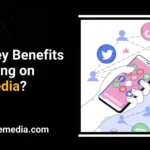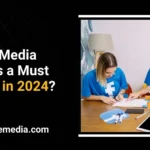Introduction
The social media marketing space is growing and quickly changing, and native advertising agency are one of the most strategic innovations in this sphere. Then, the traditional channels of advertising have become less effective due to increased consumer sophistication, thus the shift to this form of advertising. Native advertising supports advertisements with the platform’s content, which causes less interference and looks more appealing to the users. This article will explain what native advertising is, the way that native advertising interconnects with social media marketing, and why it is a game-changer in marketing.
What is native advertising?
Native advertising is a paid medium where the advertisement is made to adapt to the usual user experience of the site that it resides on. Compared to other ads that are identified from the remaining content and are interruptive in nature, native online advertising is less informative as it looks and feels like the other regular content. This approach ensures that the advertisers pass on their intended message to the target audience in a natural and appealing manner, hence making the audience engage with the message.
Define social media marketing
Social media marketing means the act of reaching customers via social media platforms to offer products, services, or brands. Marketing involves creating posts, collaborating with other users and personalities, and paying for post promotions as a means of increasing users’ attention. Social media marketing uses platforms such as Facebook, Instagram, Twitter, and LinkedIn to reach out to customers and prospective customers and enhance customer loyalty. That is why the integration of native advertising and display advertising services raised the rate of effective social media marketing to capture the user’s attention and ensure relevant engagement.
Benefits of Native Advertising Using Social Media
- Interactivity increases with integrated content, hence the buzzword enhanced.
- The advantages of it include higher click-through rates compared to traditional ads.
- Raised notions of brand image and credibility.
- Gains in relevance of ads and improved effectiveness of ad personalization services.
- Better targeting through social media accounts.
- There is a higher likelihood of viral content and organic sharing.
7 Features of Native Advertising to Boost Your Campaign
- Seamless Integration: To be integrated with content from the platform to enrich the usage experience.
- Relevance: Adapts content to fit the users’ preferences and activities.
- Non-disruptive: Retains a natural interface for users’ flow.
- Flexibility: Provides drift for articles, videos, and images, among others.
- Higher Engagement: Most of the time, it results in more clicks and interactions.
- Scalability: It becomes easily adaptable to many other platforms, thus making it accessible to many more people.
- Measurable Results: It offers extensive tracking of the campaigns it handles.
Why is native advertising important?
Native advertising has become important in the current world because it complements the modern consumer, who dislikes normal ads. The fact that native ads offer relevant materials that are easily integrated into the user’s experience in general makes native advertising more effective and trusted. It also offers targeted communications and a push notification service, which allows brands to communicate with their target consumers with messages that are likely to influence those consumers positively. Therefore, it is paramount that brands continue to invest in native advertising since it has a big task in ensuring it is effective as the social media network continues to expand.
Pros and Cons of Native Advertising
Pros:
- Higher user engagement.
- Then the Improved location of the ad and the actual view it garners.
- Increased brand credibility.
- Enhanced targeting and personalization.
- There is less likelihood that audiences will get bored than they would with the usual ads.
- Potential for viral reach.
Cons:
- Potential for perceived manipulation.
- Larger amounts of money have to be spent on the purchase of these premium spots.
- There are fewer methods of controlling the appearance of the media content in question.
- Semantically, they are very similar to organic content; often, it is challenging to identify them.
- Requires continuous optimization.
- Then the negative effects of such services, if not well executed, may lead to lawsuits from the users.
Native Advertising vs. Display Ads
Native Advertising:
- Blends with platform content.
- It is non-interrupting and more comfortable to use than the previous versions.
- Higher engagement rates.
- Customizable to user interests.
- Typically more expensive.
- Focuses on content relevance.
Display Ads:
- Different from platform contents.
- Could be more risky for users.
- Lower engagement rates.
- Wide promotion without a high degree of personalization.
- Generally less expensive.
- Then the Focuses on visual appeal.
Conclusion
Native ads are slowly becoming influential in social media marketing strategies since it offers a more natural way to engage with the customer base. As the type that is easily incorporated into the users’ interactions and capable of choosing specific content to deliver, native has been shown to be useful in generating engagement and trust. As brands strive ahead in looking for ways to engage with their target audiences, the application of native ads and social media marketing will realize a steady expansion and will be a crucial element for any marketer. Then the no matter whether you decide to cooperate with a native ads agency or make use of programmatic advertising, the effectiveness of ads is important.
FAQs
1. Why is native advertising growing?
Native advertis enhances the user experience by respecting user journeys and providing value while enabling precise targeting to reach the most receptive audience.
2. What is the goal of native advertising?
Native ads are used by brands and businesses to provide relevant, compelling content on high-quality websites to users who are most likely to be interested.
3. How successful is native advertising?
A survey shows that 93% of site visitors notice native ads while reading the title, then which is crucial for them to click on and read the entire content.




